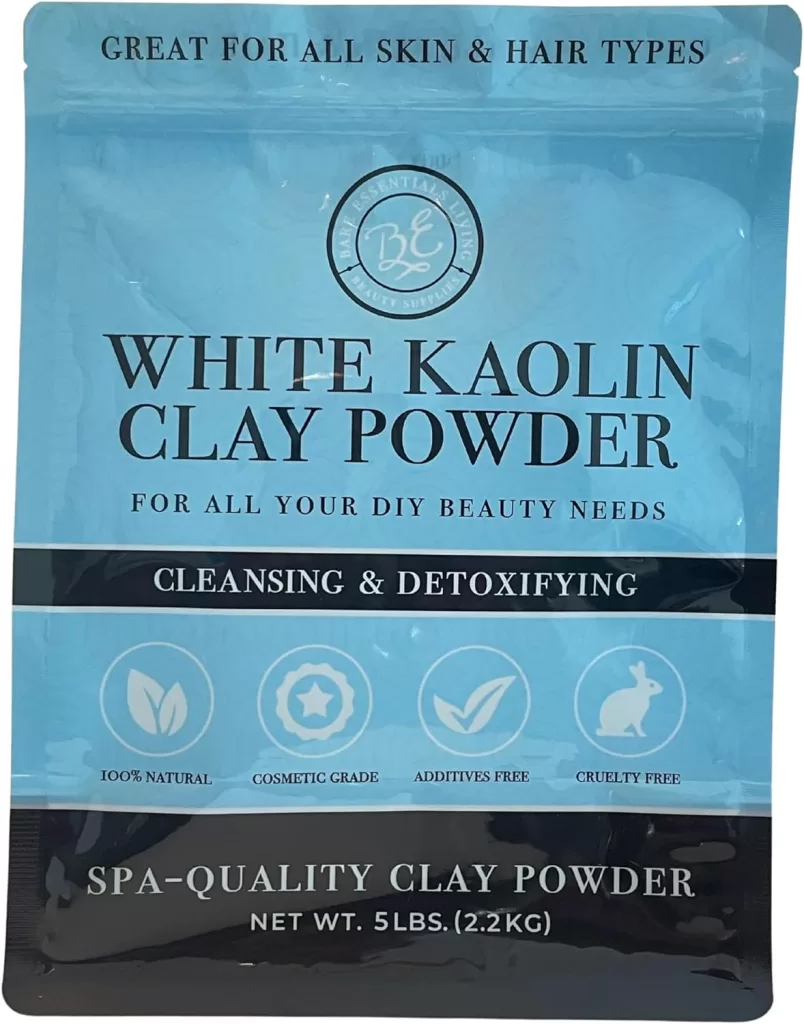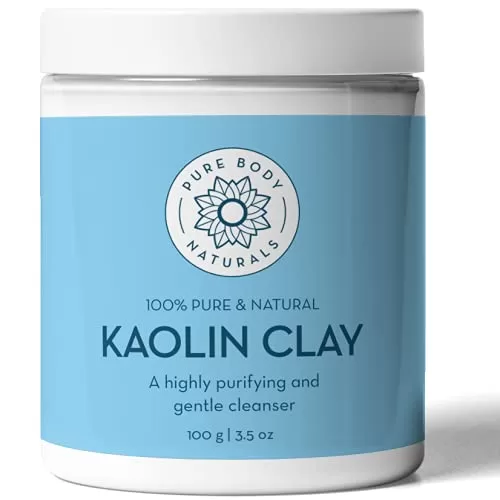What Is a Clay Mask? Clay Masks for Every Skin Type
Clay Masks for Every Skin Type: Clay masks have been a mainstay in beauty routines for years, touted for their ability to cleanse, smooth, and brighten skin. But how exactly do they work, and are they truly a magic bullet for achieving a flawless complexion? Let’s delve into the science behind clay masks and explore their potential benefits and limitations.

Clay Masks for Every Skin Type: The Power of Clay
Clay masks are crafted from various types of clay, each with a unique mineral composition. These minerals are believed to absorb oil and bacteria on the skin’s surface. This absorption process can help remove impurities that clog pores, potentially leading to clearer and smoother skin.
Benefits for Oily and Acne-Prone Skin:
Clay masks are particularly popular among people with oily or acne-prone skin. The oil-absorbing properties can help reduce excess sebum (oil) production, while the potential antibacterial properties of some clays may be beneficial in managing acne breakouts. However, it’s important to note that studies on the effectiveness of clay for acne are not conclusive.
Tailoring the Clay to Your Skin:
Different types of clay offer varying benefits. Kaolin clay, for example, is known for its gentle cleansing properties, making it suitable for sensitive skin. Bentonite clay, on the other hand, has a stronger drawing effect, ideal for oilier skin types. Consulting a dermatologist can help you choose the right clay mask for your specific needs.
Popular Types
Kaolin clay: The gentlest of the bunch, is ideal for sensitive skin due to its fine texture and minimal oil absorption.pen_spark
Bentonite clay: Known for its powerful absorption properties, is a champion for oily and acne-prone skin.
French green clay: Another effective oil absorber, boasts additional benefits like detoxification and gentle exfoliation.pen_spark
Fuller’s earth clay: Is a multi-tasker, suitable for oily, dull, and pigmented skin due to its deep cleansing and potential for brightening effects.
Rhassoul clay: Often revered for mature skin, offers a gentle cleansing action while leaving the skin feeling soft and supple.
The Science Behind the Tightening Effect:
Clay masks often leave a tightening sensation on the skin. This is because the alkaline nature of most clays can temporarily counteract the skin’s slightly acidic pH. This temporary shift can tighten the skin’s surface, although the effect is not long-lasting.
Limitations to Consider:
It’s important to remember that clay masks are not a cure-all for skin concerns. They can’t address the underlying causes of acne or other skin conditions. Additionally, frequent use of clay masks, especially those with a strong drawing effect, can strip the skin of its natural oils, leading to dryness and irritation.
Clay Masks for Every Skin Type: Finding the Right Balance
For those seeking to incorporate clay masks into their routine, moderation is key. Start with once-a-week usage and adjust the frequency based on your skin’s tolerance. If you experience any dryness or irritation, discontinue use and consult a dermatologist.
Clay Masks for Every Skin Type: The Bottom Line
Clay masks can be a valuable addition to a skincare routine, particularly for those with oily or acne-prone skin. However, it’s crucial to choose the right clay for your skin type and use them judiciously. For best results, combine clay masks with a well-rounded skincare regimen that includes gentle cleansing, moisturizing, and sun protection. Remember, a dermatologist can provide personalized guidance to help you achieve your healthiest and most radiant skin.
Clay masks aren’t just for facial skincare! They can also be a helpful addition to your hair care routine, particularly if you have an oily scalp and hair. Let’s explore how clay masks work their magic on your mane.
Clay Masks for Hair
The Oil-Absorbing Powerhouse:
Similar to their role in facial masks, clays in hair masks are believed to absorb excess oil and bacteria from the scalp. This can help regulate sebum production, leaving your hair feeling cleaner and fresher for longer.

How to Use a Clay Hair Mask:
- Application: Spread an even amount of the clay mask throughout your scalp, ensuring it reaches the roots. You can also apply a light layer to the hair ends for extra nourishment.
- Processing Time: Allow the mask to sit for 5-10 minutes to give the clay time to absorb oil and impurities.
- Gentle Removal: Rinse the mask thoroughly with warm water. Since the clay absorbs dirt and oil, shampooing after use typically isn’t necessary.
- Patch Test: For those with sensitive scalps, it’s always advisable to do a patch test on a small area of skin behind the ear before applying the mask to your entire scalp.
Frequency and Considerations:
- Moderation is Key: Limit clay hair mask use to about once a week to avoid stripping your scalp of its natural oils.
- Not for Everyone: If you have a sensitive or dry scalp, clay masks might be too drying. Opt for hair masks formulated for your specific scalp concerns.
FAQs: Clay Masks for Every Skin Type
Q: What are clay masks? A: Clay masks are skincare products made from various types of clay, known for their oil-absorbing properties.
Q: Who are clay masks suitable for? A: Clay masks are particularly beneficial for oily and acne-prone skin. However, different clays cater to different skin types.
Q: How do clay masks work? A: Clays absorb excess oil and impurities, helping to unclog pores and reduce shine.
Q: What are the different types of clay masks? A: Common types include kaolin clay, bentonite clay, French green clay, fuller’s earth clay, and rhassoul clay. Each has specific properties and benefits.
Q: How often should I use a clay mask? A: The frequency depends on your skin type. Oily skin may benefit from weekly use, while sensitive skin may only need it once a month.
Q: Can I use clay masks on my hair? A: Yes, clay masks can help absorb excess oil from the scalp, especially for those with oily hair.
Q: Are there any side effects of using clay masks? A: Overuse can lead to dryness and irritation, especially for those with sensitive skin. It’s important to listen to your skin and adjust usage accordingly.
Q: Can I use clay masks if I have dry skin? A: While not ideal, some gentle clays like kaolin can be used occasionally, but it’s essential to follow up with a hydrating moisturizer.
Q: How do I choose the right clay mask? A: Consider your skin type and specific concerns. Consult a dermatologist for personalized advice.
Remember: Always patch test new products, including clay masks, to avoid potential allergic reactions.
The Takeaway: Clay Masks for Every Skin Type
Clay masks offer a natural way to manage oily hair and scalp. However, remember to use them judiciously and consult a dermatologist if you have any concerns about scalp sensitivity. By incorporating clay masks into your hair care routine, you can experience cleaner, fresher, and more manageable hair.
Explore more articles like this @ Where And How Resources















